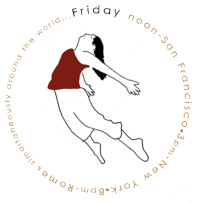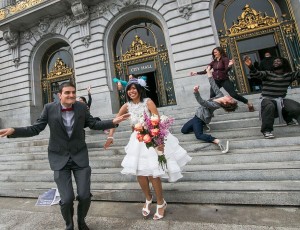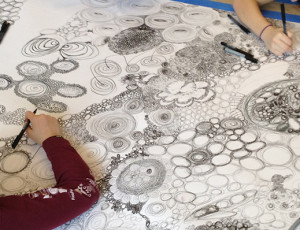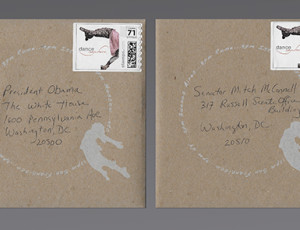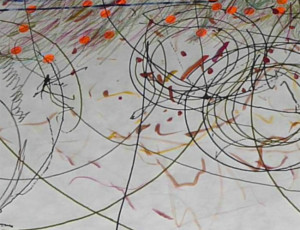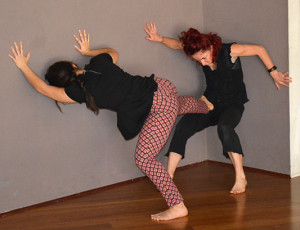Currently a social anthropology master’s student at Cambridge University, 22 year old Torin Jones finds his dance artistry to be an indelible component of his unquenchable quest for knowledge.
This spring Jones will graduate from Cambridge. His thesis project, Bodies in Motion: Race and Gender in London Dancehall, moves deep into the cultural history and contemporary practices of Afro-Caribbean dancers in London. Juggling the equally demanding spheres of dance and scholarship can be a trying endeavor, but Jones moves nimbly between the two disciplines – marrying them through performance, pedagogy and travel.

How do you describe the mission and character of your work? What inspires you to create?
For me, dance is about building community and respecting the different perspectives and movement that other people offer in collaborative and creative processes. At the same time, dance teaches me to appreciate and respect my body. One on hand, this means acknowledging and pushing the limits of my physical capabilities. One the other hand, this means continually exploring the different ways in which my body can move through space and time.
Please describe your latest site work artistry. Why did you choose this specific location? How did it feel to bring dance to a venue off the concert stage? How did it affect your movement and your perspective on dance?
My latest site work involved a dance performance on “Jesus Green,” a park in central Cambridge, UK. This dance was a contemporary solo to Skrillex Dubstep song called “Equinox.” I chose this venue because there is a lot of open green space, and I could experiment with performing in different parts of the park. Performing in the park was very challenging because I had to perform for audiences that watched from all sides (in the round). This actually made me feel self-conscious about how I appeared from the back. Honestly, I think this prevented me from fully opening up to the music and experience. If I could do it again, I would relax more and embrace the experience, rather than stressing over audience members behind me.
dance anywhere® promotes a public worldwide arts community. Similarly, you have created work in different countries and communities. What have you learned? Do you find yourself creating differently in different environments?
Most recently, I have choreographed and dance in Taipei, Taiwan (2010) and in Cambridge, UK (2012 and 2013). These experience have both increased my appreciation for dance as a community-building endeavor. I learned that simply taking a class with individuals helps to build relationships and trust, because dancing with others requires a certain level bodily and social vulnerability. I also learned that, as an African American, I will be associated with hip hop due to globalizing understandings of race and artistry. Moreover, I have come to appreciate the universality of dance. I currently teach a hip hop class for students at the University of Cambridge. I have seen that my classmates from all over the world, from Hungary to Sri Lanka, all can embrace and enjoy dance. I think that I create the same in different environments. My dancing changes most when I collaborate with other artists and we sometimes comprise on different stylistic choices.
During your site work experience, were other people around? How did passerby’s react to your work? How did the process differ from creating work for the concert stage? What inspired you to choose this particular location?
The most challenging aspect of this site work was performing on grass. Performing on stages allows for a certain turns that are not possible on grass. At the same time, the grass allowed me to take more risks with floor (or ground) work simply because it did not hurt to fall and mess up. In this sense, the materiality and the physicality of the performances changed dramatically. I chose this location because of the many people who use the park and the unassuming beauty of the park and adjacent river.
Are there other non-traditional sites that you look forward to exploring?
I once saw a great video of dancers performing on a subway train. Ever since, I have really wanted to perform on a subway train. I hope that I could enliven up the morning or evening commute for many tired workers. At the same time, I fear that I might annoy people.
Lately, what inspires you to keep making work?
Right now, dancing and creating provide a much needed relief from the rigors of graduate school. Studying at Cambridge can be stressful and demanding. I dance to maintain my sanity. Otherwise I would forget to leave the library, and I would forget that my body has a much to offer as my mind (not that the two are actually separate). Also, I research dance from an anthropological standpoint, so dance helps me research and connect with different dance communities in London (where I research).
Is there a certain audience you create for? Are there certain communities/individuals who are especially drawn to your art?
I do not think that I perform for certain audiences. I think that the great thing about dance is the different ways in which diverse audiences interpret movement. I would not want to limit myself by limiting my audience. I am just thankful to have an audience at all!
What is your next project?
My next project is a contemporary hip hop duet. This is very exciting for me because I get to work with a talented dancer from Germany. This choreography, however, will also be challenging because it requires me to blend two styles of dance that I tend to separate in my head because, at times, it feels difficult to psychologically and physically move between two different movement techniques. At the same time contemporary hip hop opens up the possibility for all sorts of daring movements and reinterpretations of beats, meanings, and rhythms.
Less than a year ago Jones graduated from U.C.Berkeley in the California Bay Area with his B.A. in International and Area Studies. He has broadened his studies of dance and culture by studying the languages and lifeways in people in Fukuoka Japan, Taipei, Taiwan and Seoul, Korea. Since moving to London for school in fall 2012 he has become a dynamo in the Cambridge student dance community, leading weekly classes, performing as a soloist in the annual student showcase and choreographing original sitework.
His mission as an artist is colored by his fierce respect for human diversity and the empowerment of people of all colors. His performance experience spans the globe including Taipei, Taiwan, Cambridge U.K. and his home state of California. One of his upcoming projects in London is a contemporary hip-hop collaboration with his colleague, a German hip-hop dancer.
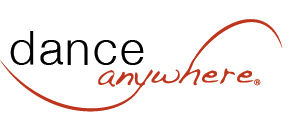
 Sign In
Sign In